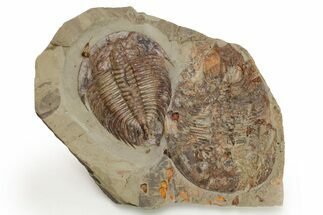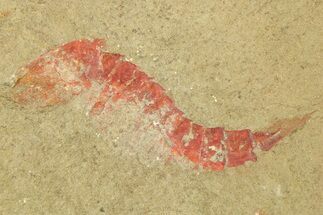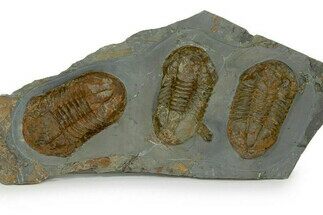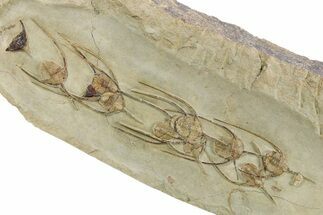This Specimen has been sold.
11.3" Ordovician Trilobite (Dikelokephalina) - Excellent Preservation
This is a large, 11.3" long, Lower Ordovician trilobite (Dikelokephalina brenchleyi) from Ouled Slimane, Morocco. The preservation on this example is very nice, and the orange shell contrasts well with the light colored shale. This specimen has no restoration. I've rarely seen examples of this trilobite this nice.
A description of this trilobite can be found at the link below:
Trilobites of the genus Dikelokephalina from Ordovician Gondwana and Avalonia
A description of this trilobite can be found at the link below:
Trilobites of the genus Dikelokephalina from Ordovician Gondwana and Avalonia
About Trilobites
Trilobites are an extinct class of marine arthropods that thrived for nearly 270 million years, from the early Cambrian to the end of the Permian period (around 521 to 252 million years ago). They are one of the most successful and diverse groups in the history of life, with over 25,000 described species spanning a wide range of sizes, shapes, and ecological niches. Known for their distinctive, segmented exoskeletons, trilobites provide invaluable insights into the evolutionary history of arthropods and the dynamics of ancient marine ecosystems.
Trilobites are an extinct class of marine arthropods that thrived for nearly 270 million years, from the early Cambrian to the end of the Permian period (around 521 to 252 million years ago). They are one of the most successful and diverse groups in the history of life, with over 25,000 described species spanning a wide range of sizes, shapes, and ecological niches. Known for their distinctive, segmented exoskeletons, trilobites provide invaluable insights into the evolutionary history of arthropods and the dynamics of ancient marine ecosystems.
SPECIES
Dikelokephalina brenchleyi (Fortey 2010)
LOCATION
Ouled Slimane, Zagora Area, Morocco
FORMATION
Fezouata Shale
SIZE
11.3" long on 14.4 x 12.3" shale
CATEGORY
SUB CATEGORY
ITEM
#239647
We guarantee the authenticity of all of our specimens.
 Reviews
Reviews











